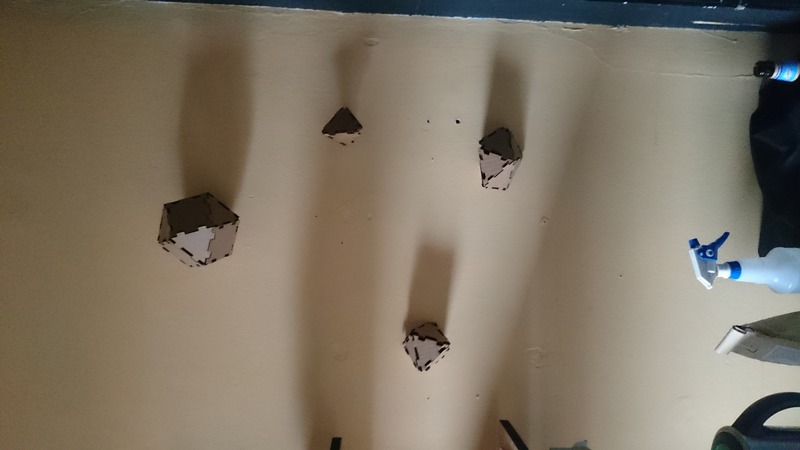I started off wanting to design a bunch of parts that would let me build a Snub cube, a particularly beautiful chiral polytope, entirely made out of squares and equilateral triangles:
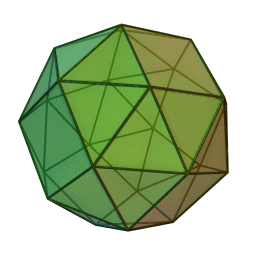
If I just made lots of squares and triangles that would pressfit with tabs, then I could make it, and I would have a construction kit for modeling lots of different kinds of polyhedra!
My initial Rhino model was naive. I made a square and a triangle, one with tabs and one with holes. Of course, despite the fact that we discussed this in class, I forgot that the tabs have to be a few mils wider than the slots for press-fit to work. Indeed, the below pieces fell apart on assembly.
Initial rhino model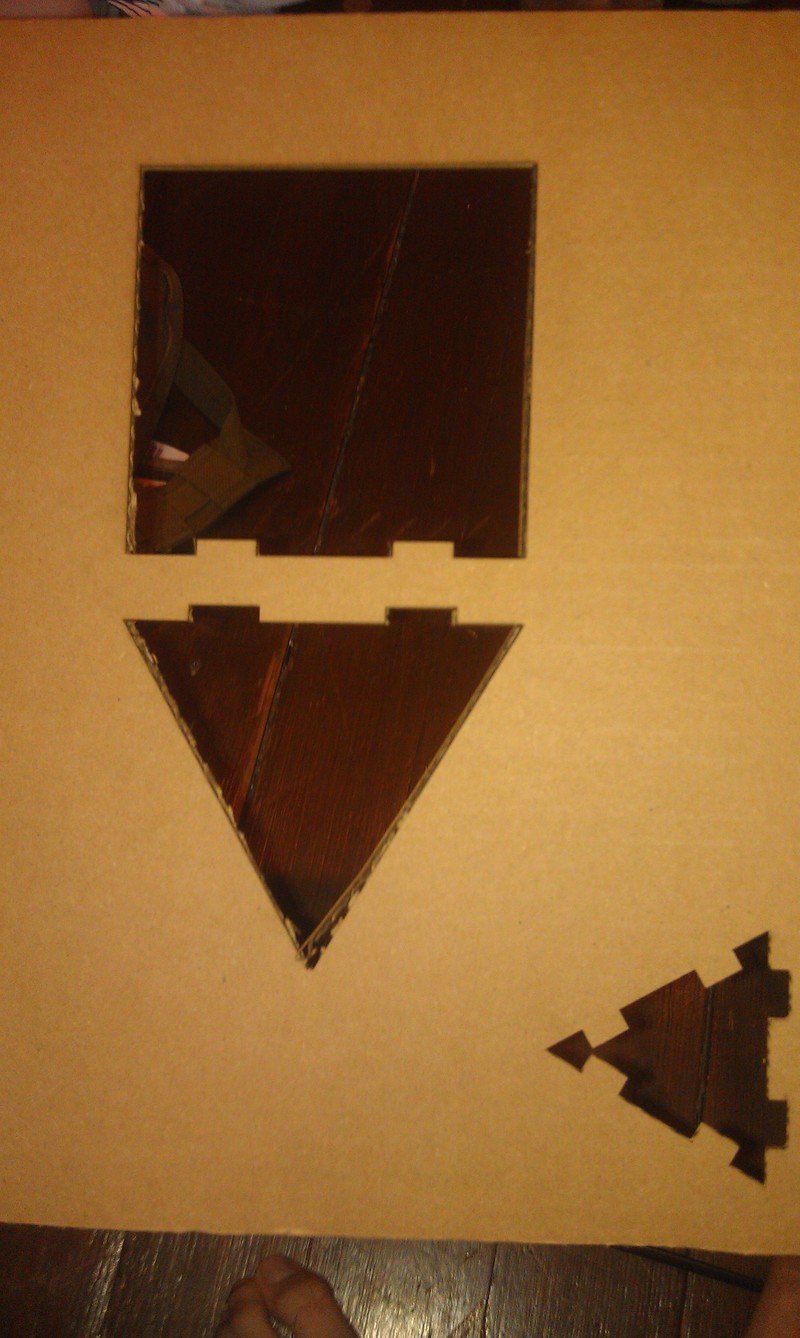
I began to experiment with Rhino on the fablab computer. On the way, I made some rookie laser cutting mistakes.

I made many slots and tabs of various sizes,...
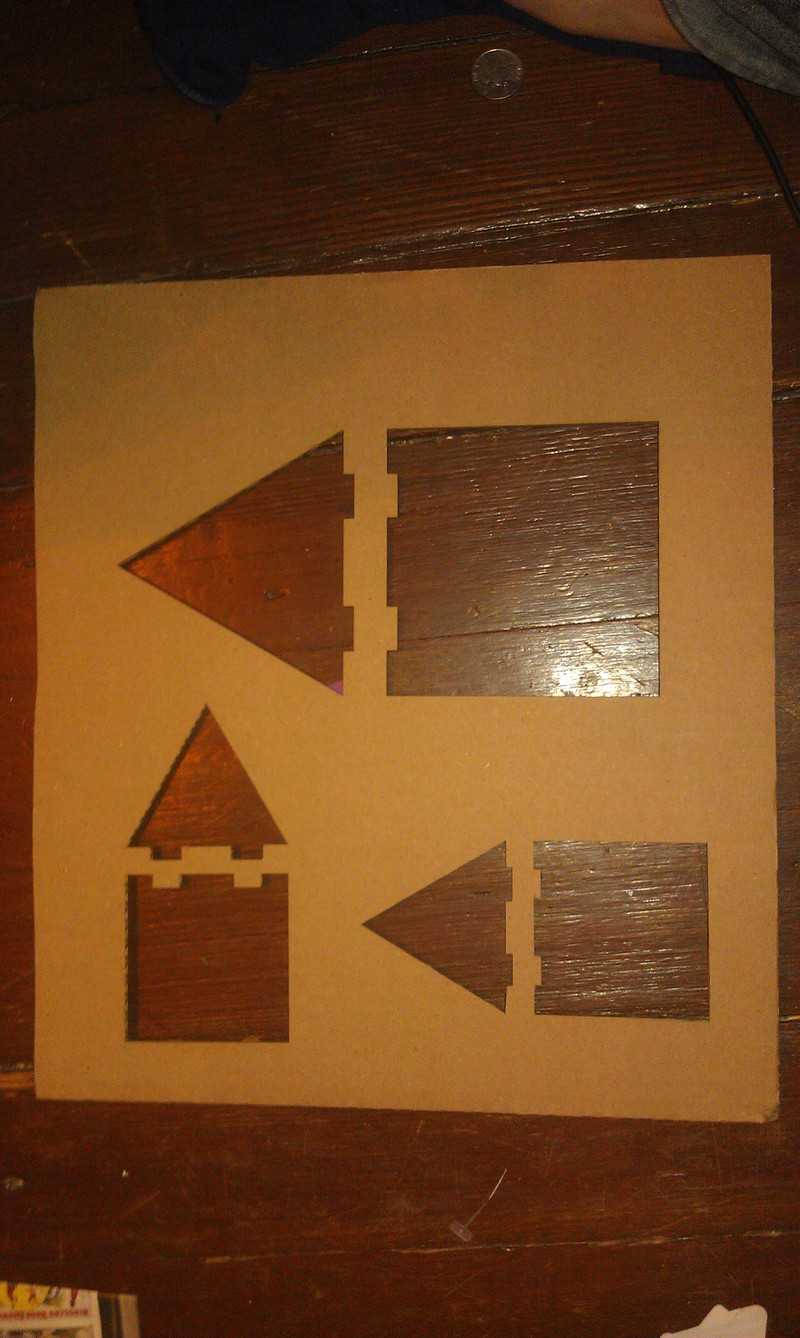
Until some finally worked!
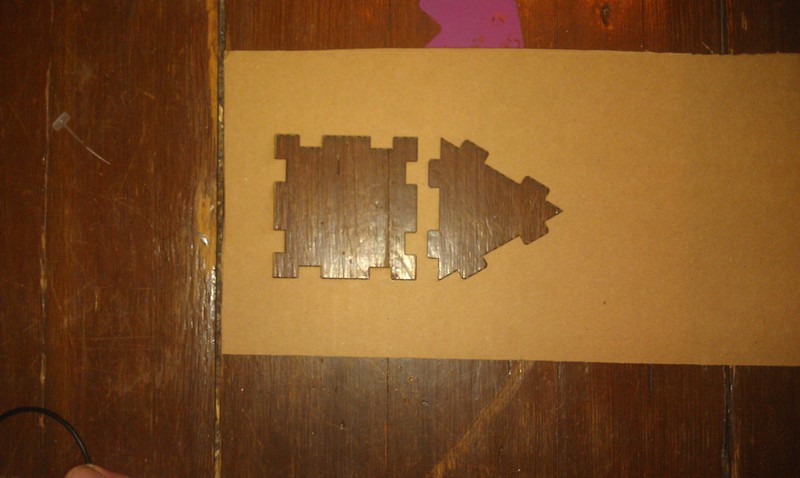
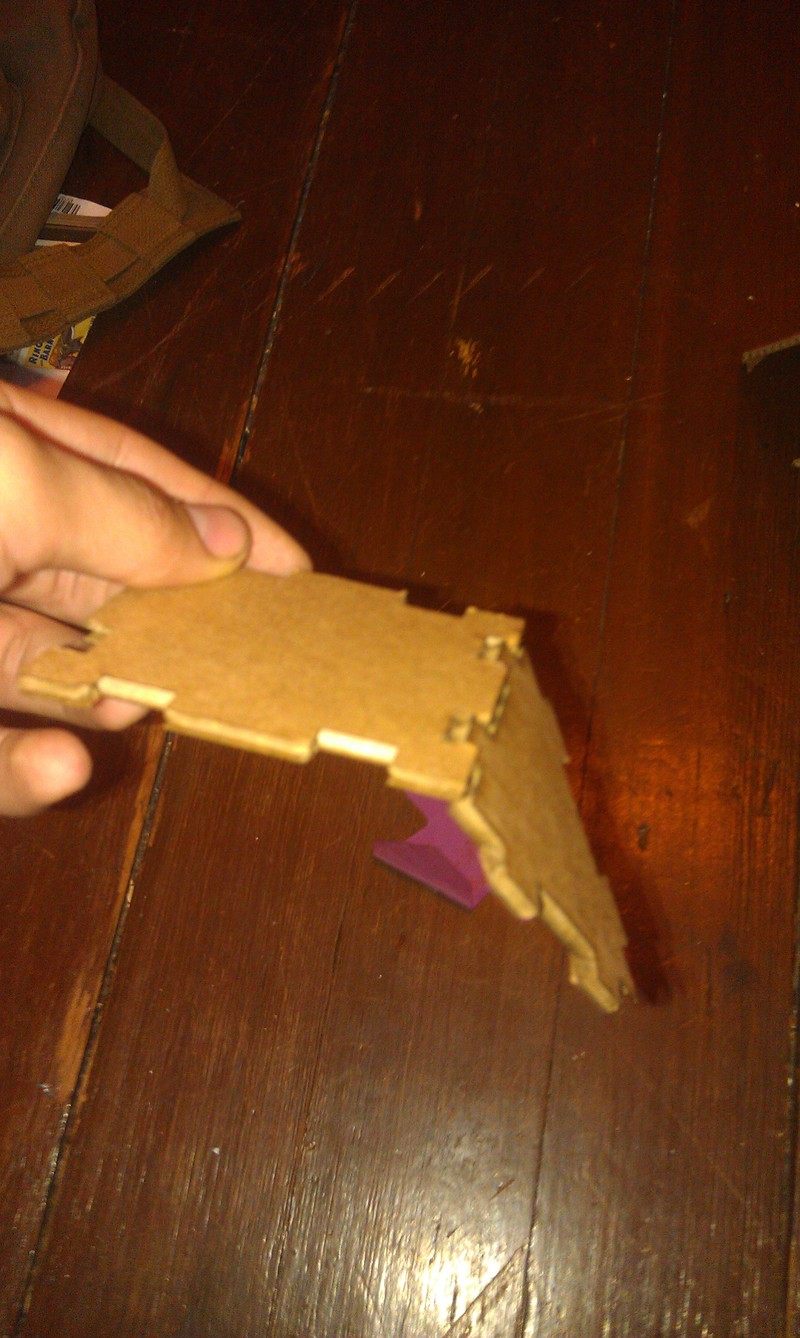
As you can see, the above two pieces are hanging together nicely at a 135 degree angle. I did not measure the exact width of the tabs, but it can be recovered from the Rhino file attached near the bottom of this page.
However, when i began to try to assemble a polyhedron, I I realized that I had made an elementary mathematical mistake: all my triangles have tabs and all my squares have slots, I can only fit triangles into squares, and this severely constrains the geometries I can make!
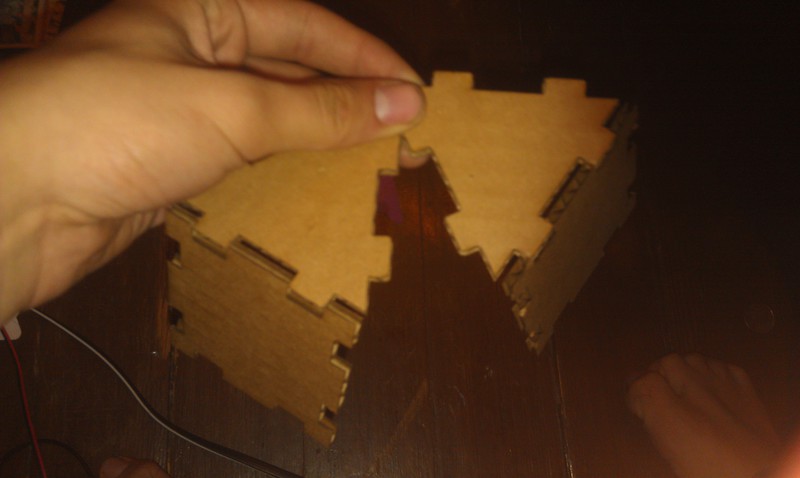
I quickly mixed and matched sides to make several kinds of triangles. This was the final polyhedral construction kit:
I made two more kinds of triangles, a triangle with all slots, and a triangle with two slots and one hole. I didn't make the fourth kind of triangle due to a lack of time. I wonder whether it is a theorem that any polyhedron entirely made of triangles can be made with the three triangles I have made, ignoring the one I did not make. This question bothered me immensely as I played with these little things; luckily I managed not to become completely distracted by tantalizing but irrelevant mathematics.
You can see that where a vertex has two slotted edges, the connection between the tip of the vertex and the main body of the triangle is weak. I added some cutoffs in the slots to make the connection stronger, but it is still not very stable, as you can see in the photographs. I have much to learn about making things.
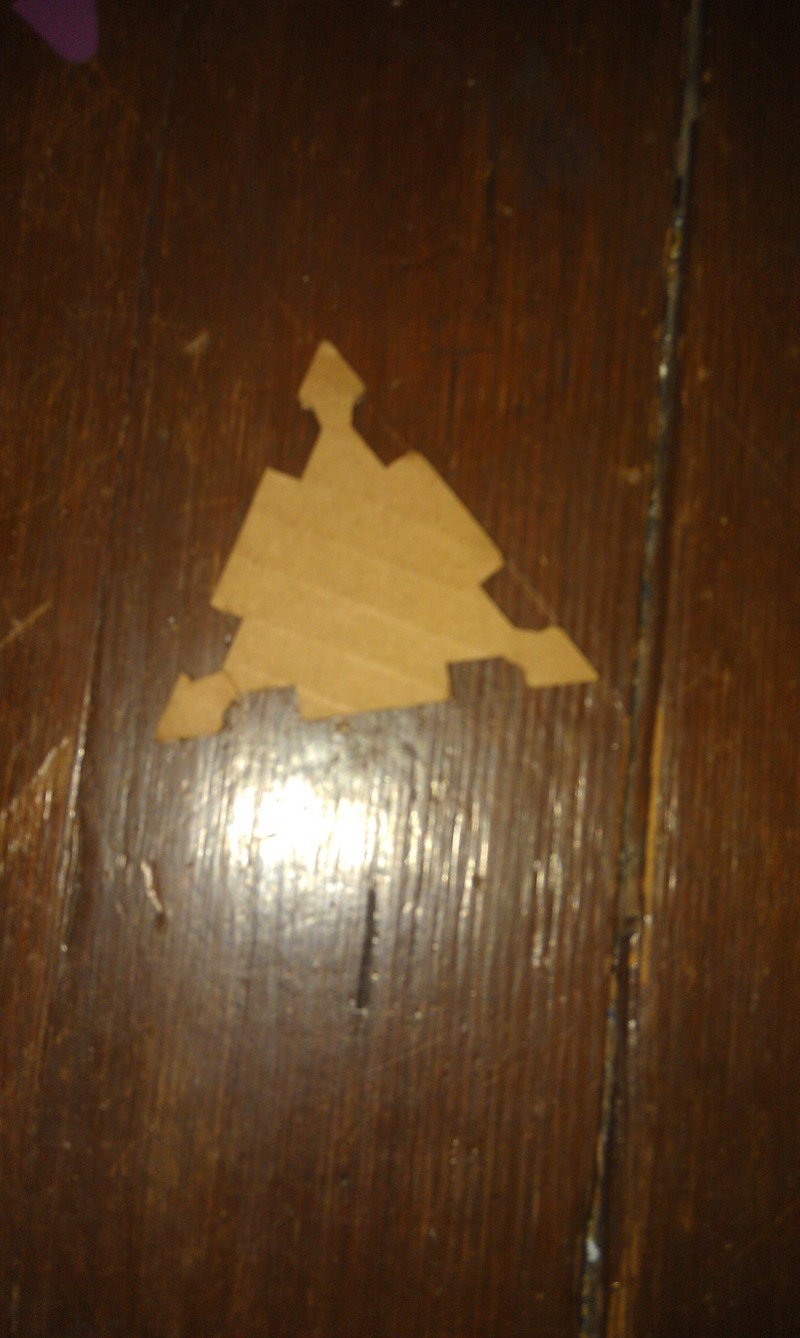
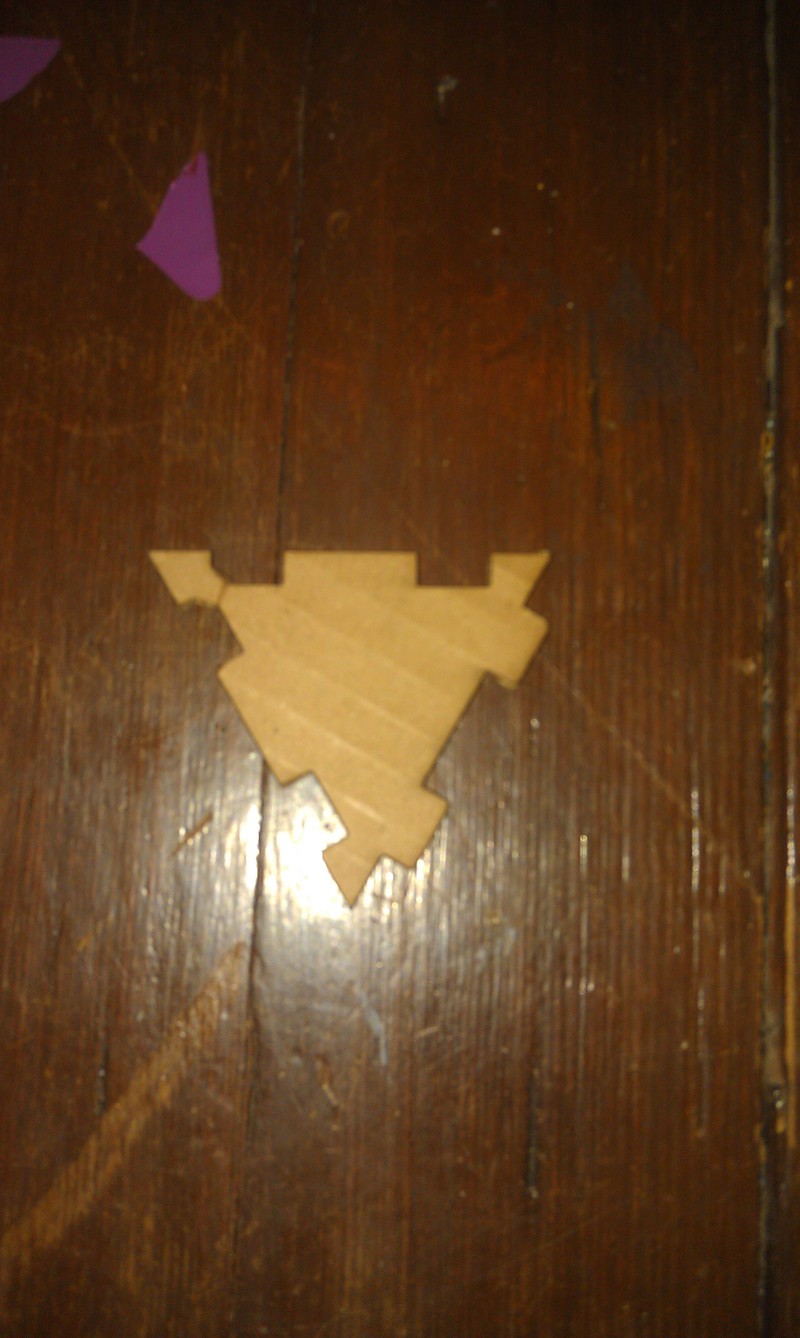
Once the kit was cut out, I could begin to make polyhedra. Here is one that is partially assembled:

It makes a really nice container for chalk. Here are other polyhedra I made:
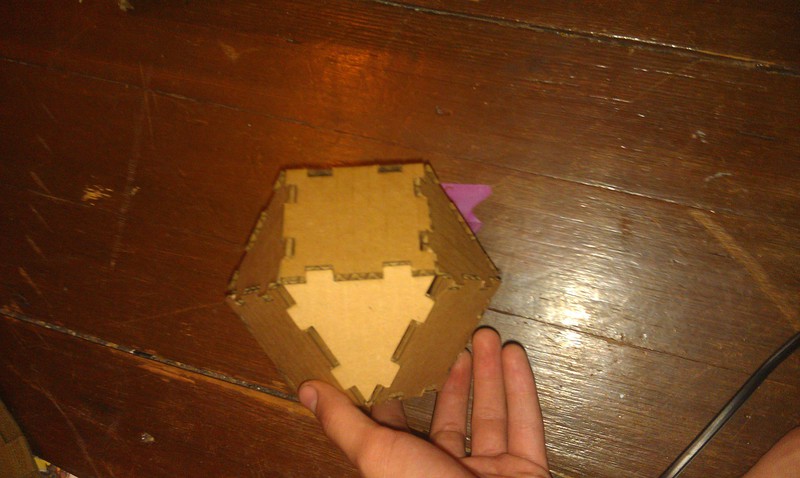

They fit together with some difficulty. As you can tell in the image below, at vertices with many edges, the corner pieces bunch up and push apart, making it difficult to assemble. I should have made the corners rounded and I should have made better joints. It is interesting though that this physical manefistation of curvature in polyhedra is so extremely physical in this context:
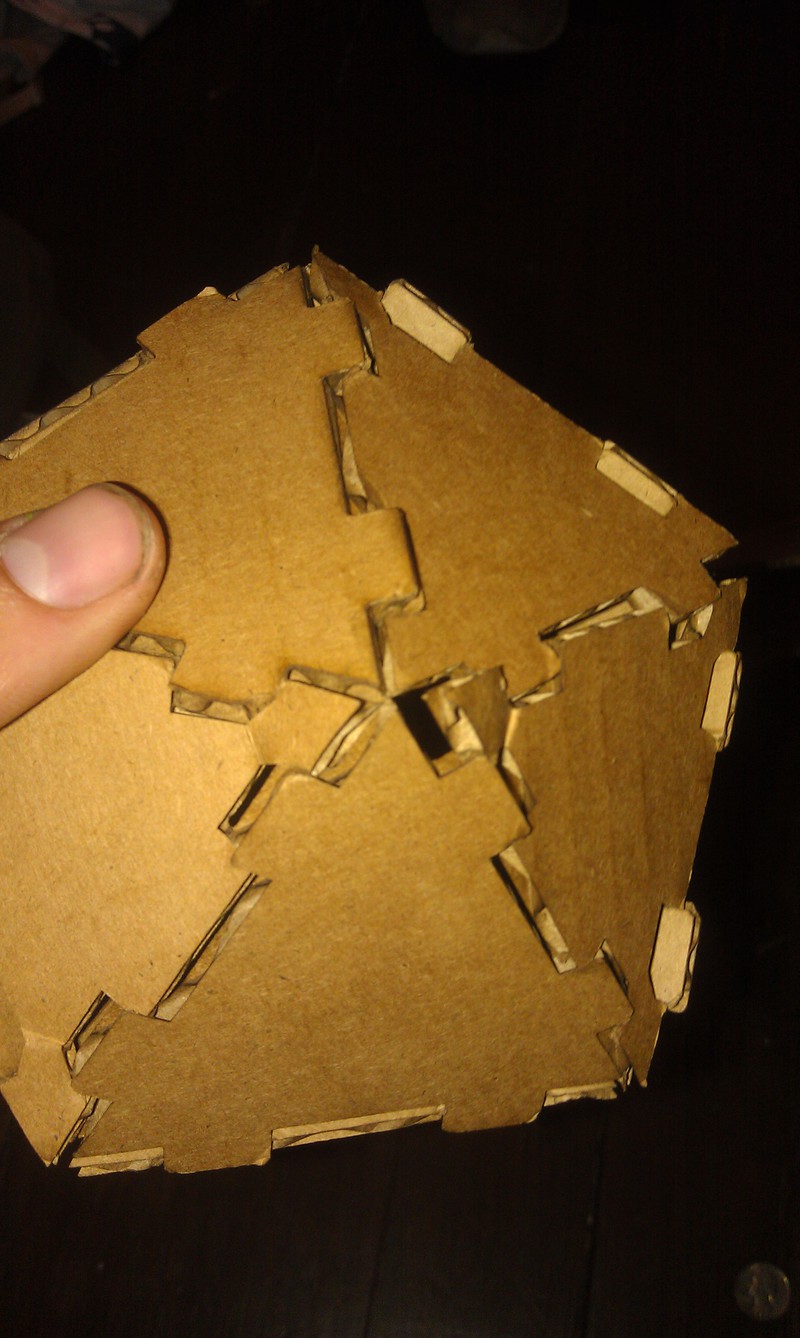
I really went a little overboard on the triangles:
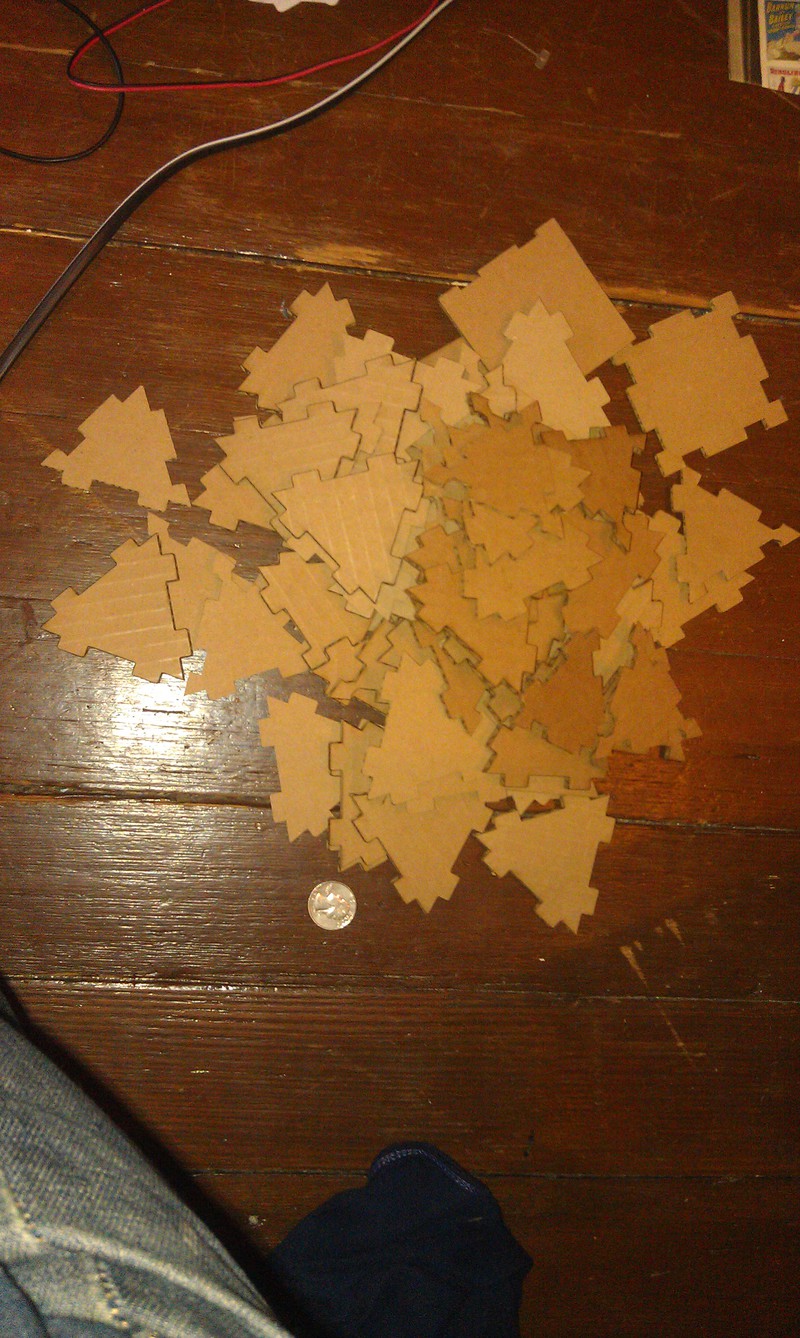
I didn't end up making the snub cube due to the issues mentioned before. In addition, because it has so many parts, the upper half of the snub cube had trouble holding itself together without the cap piece, and the cap piece is difficult to put on without everything else already assembled. If I had made better joints (maybe of the snap-on kind discussed in class) maybe this would be possible. Learning basic mechanical engineering concepts, one small step at a time.
These really are fun silly toys though. For instance, here is a little alien saucer attacking the empire state building:
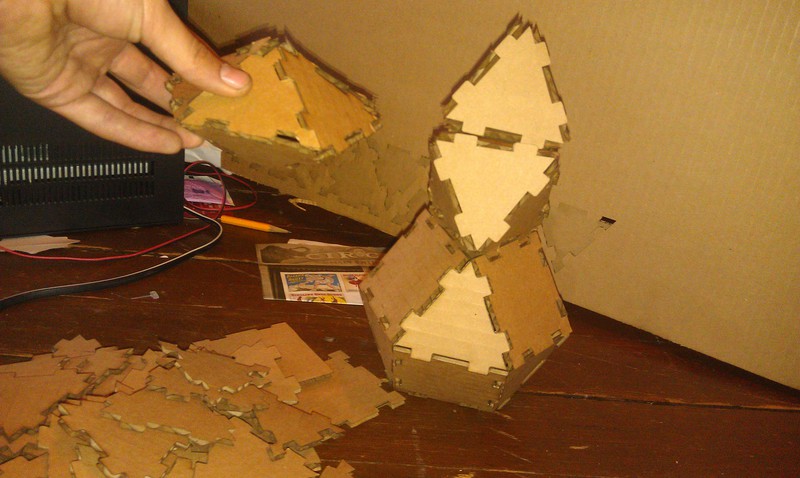
These make very pretty wall decorations! :-)
